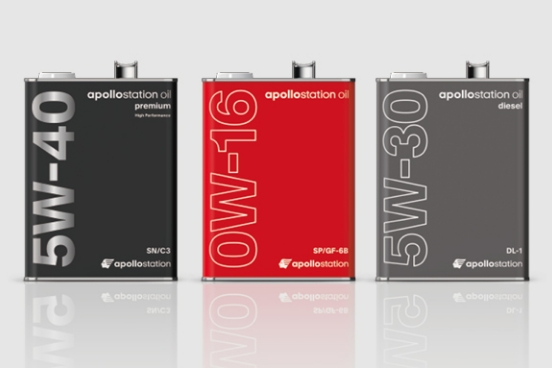How engine oil works

Engine oil standards, viscosity, and how to ride
apollostation carries a wide variety of engine oils. To choose the right engine oil for your car, it is important to know whether the "standards and viscosity" meet the performance required for your car, and also whether it suits your "driving style" and preferences.
Here we will explain the specifications, viscosity, and how to ride.
standard
It's on the can What is it?
What is it?
The donut mark is proof of the excellent quality and performance of the oil. This mark is given to oils that pass all of the quality levels and viscosity classifications.
Oil that has been certified to the standards established by EOLCS (Engine Oil Licensing Certification System), an organization organized by organizations such as API (American Petroleum Institute), SAE (American Society of Automotive Engineers), and ASTM (American Society for Testing and Materials). This is a mark that can be displayed on the
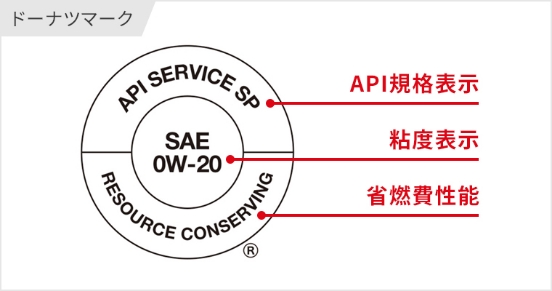
The products below are products that have cleared SP standards.

The starburst mark and shield mark are marks that can be displayed on oils that have passed the gasoline engine oil standards, including fuel efficiency performance, established by ILSAC (Japan-US Automobile Manufacturers Association Standards).
Oils that pass ILSAC's GF-5 or higher standards are marked with a starburst mark, and oils with 0W-16 viscosity grade are marked with a shield mark. GF-6 is the current highest standard, and is an oil that has SP performance according to API standards and is fuel efficient.
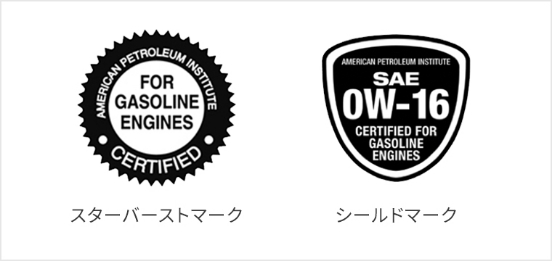
ACEA
The ACEA standard is a standard established by the European Automobile Manufacturers Association.
In January 1996, we began implementing standards for quality and performance classification of automobile engine oil.
Since 2004, the ACEA standard has been changed from the previous separate standards for gasoline (A standard) and diesel (B standard) to dual-use standards such as A3/B4. Furthermore, a new C standard was introduced as a low ash oil standard.
viscosity
What is viscosity?
Viscosity indicates the stickiness of the oil. Classification by SAE viscosity number is common.
What is SAE viscosity number?
SAE stands for American Society of Automotive Engineers and specifies oil viscosity using viscosity numbers.
The viscosity of oil changes depending on the temperature. The viscosity becomes softer as the temperature rises and becomes harder as the temperature falls. On the other hand, the required viscosity of engine oil varies depending on the engine used.
In other words, it is important to use engine oil with the optimum viscosity in order to maximize engine performance.

how to ride
The type of engine oil that is suitable for you and the replacement period will vary depending on the type of car, driving style, and mileage. Engine oil is indispensable to keep the engine in good working order. By using the oil that is suitable for your vehicle, you will be able to protect the engine and maintain its initial performance, including fuel efficiency.
What is severe condition?
Driving like the example below is called ``severe conditions'' because it places a greater burden on the engine oil than normal driving.
If your driving falls under this severe condition, you will need to use more durable oil or change the oil more frequently than regular oil changes.

Why “driving in a nearby area” falls under severe conditions
If the distance traveled per trip is short, you may end up driving before the engine is completely warmed up.
Driving at low temperatures puts a greater strain on the engine oil than driving when the vehicle is completely warmed up, so "driving in a nearby area" falls under severe conditions.
In addition, driving on roads with heavy traffic congestion also puts a greater strain on the engine.
Under these operating conditions, it is necessary to add more durable engine oil or to increase the frequency of oil changes.
Role of engine oil
The engine is the heart of a car.
Oil is the blood of an engine.
Just like blood to the human body, every drop of oil must be in good condition for a car to run smoothly.
By regularly changing the engine oil, which is the blood of your car, you can enjoy a safe and comfortable car life.
What is the function of engine oil?
Engines are made of metal, and each component generates power through rotational and reciprocating motion.
If there is no engine oil, the friction between the metal parts will not only prevent the engine from running smoothly, but also lead to serious damage.
Engine oil creates a film of oil that prevents metals from coming into direct contact with each other, reducing friction and allowing the engine to run smoothly.
However, as engine oil works repeatedly in the engine, it gradually deteriorates and decreases.
This means that regular oil changes are necessary to keep your engine in top condition.
Main role of engine oil
1. Lubricating effect
An oil film is created to prevent metals from coming into direct contact with each other, ensuring smooth operation.
2. Cooling effect
The oil circulation works by absorbing and dissipating the heat generated in the engine and cooling it.
3. Sealing action
Prevents pressure from escaping from the gap between the piston ring and cylinder.
4. Cleaning and dispersion effect
It captures soot and impurities that occur in the engine into the oil.
5. Rust prevention effect
Protects the engine from rust and corrosion caused by moisture and harmful gases.
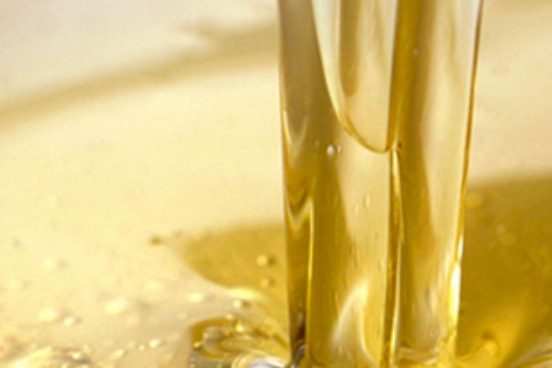
Need for oil change
1. Contamination with foreign matter
Impurities such as ``fine metal wear particles'' and ``burnt residue from fuel and engine oil'' gradually accumulate, causing a loss of performance.
2. Decrease in viscosity
As engine parts move vigorously, the additives that maintain proper viscosity are gradually consumed, and the original viscosity is gradually lost, making it impossible to maintain the necessary viscosity.
3. Oil deterioration due to oxidation
As it is exposed to high temperatures, performance is lost due to heat-induced carbon generation and sludge formation. In addition, oxidative deterioration progresses due to contact with various metals and air.
4. Oil reduction
It burns little by little with the fuel or gradually decreases through evaporation. Simply adding more oil will not remove the deterioration that has occurred, so it will not be a fundamental solution.

What happens if I don't change the oil?
Not only will the engine not be able to achieve its original performance, but it will also shorten the engine's lifespan and, in the worst case, lead to failure.
-
If degraded products get mixed into the oil or adhere to various parts of the engine, the engine will no longer be able to achieve its original performance.
-
Engine oil that has lost its performance cannot perform its original lubrication function properly, leading to abnormal wear and, in the worst case, seizing.
We recommend changing the oil every 5,000km or every 6 months.
Engine oil has a cleaning effect that removes dirt from the engine. However, each time you use it, its cleaning effect deteriorates.
Changing the oil every 5,000km/6 months is much more effective at keeping the engine internally clean than changing the oil every 15,000km/year, and as a result, you can prevent fuel consumption loss and horsepower loss. Therefore, we recommend changing the oil every 5,000 km or every 6 months.
Also, keeping your engine clean will prevent your car's fuel economy and horsepower from decreasing.
Apollostation oil not only prevents dirt, but also has the ability to remove dirt from inside the engine.By cleaning the inside of the engine, it will keep your car in good shape.
low viscosity oil
Due to increased environmental regulations in recent years, cars are now required to have high fuel efficiency. Automobile manufacturers are incorporating fuel-saving technology into various parts of cars, especially engines, which are being made lighter and have less friction by improving the materials and shapes of parts. One of the important factors is lowering the viscosity of the oil.
Engines for which 0W-20 oil is recommended are designed to avoid wear and damage even when low-viscosity oil is used to improve fuel efficiency. Therefore, using 0W-20 oil will provide the best engine performance.
(However, if 0W-20 oil is used in vehicles other than those recommended for 0W-20, there is a risk of engine trouble, so please do not use it in vehicles other than those recommended.)
Differences from other oils
Low viscosity oils (0W-20 and 0W-16) are less viscous and "smooth".
As shown in the figure, when iron balls are simultaneously dropped from above in a plastic pipe filled with oil, the iron balls will fall faster because the lower viscosity oil (0W-20) has less resistance.
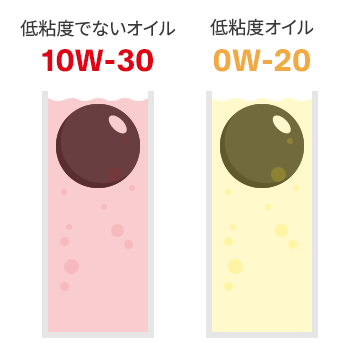
Typical car models recommended for fuel saving oil (0W-20/0W-16)
Light vehicle
N-BOX (N series), Wagon R,
Spacia, Hustler, Jimny, Alto, Tanto, Move, Mira, Days, ek series
1000~2000CC
Prius, Noah, Voxy, Corolla, CH-R, Aqua, Sienta, Yaris, Rise, Note, Fit, Impreza, MAZDA2
2200CC~
Lexus LS, Lexus RX, Crown, Alphard, Vellfire, Elgrand, X-Trail, Accord, Odyssey, Legacy, CX-5, MAZDA6, Outlander
*Please note that the vehicle model is just an example and may differ depending on the vehicle type and engine type.
Low viscosity oil contributes to fuel efficiency
Vehicles that recommend low-viscosity oil achieve their original fuel-saving performance by using the oil with the lowest viscosity among the recommended oils. In addition, in cars that recommend low-viscosity oil, each part of the engine is designed with the assumption that low-viscosity oil will be used.
In order to maximize the fuel efficiency of vehicles that recommend low viscosity oil, we recommend 0W-20 for vehicles that recommend 0W-20 oil, and 0W-16 for vehicles that recommend 0W-16 oil.
